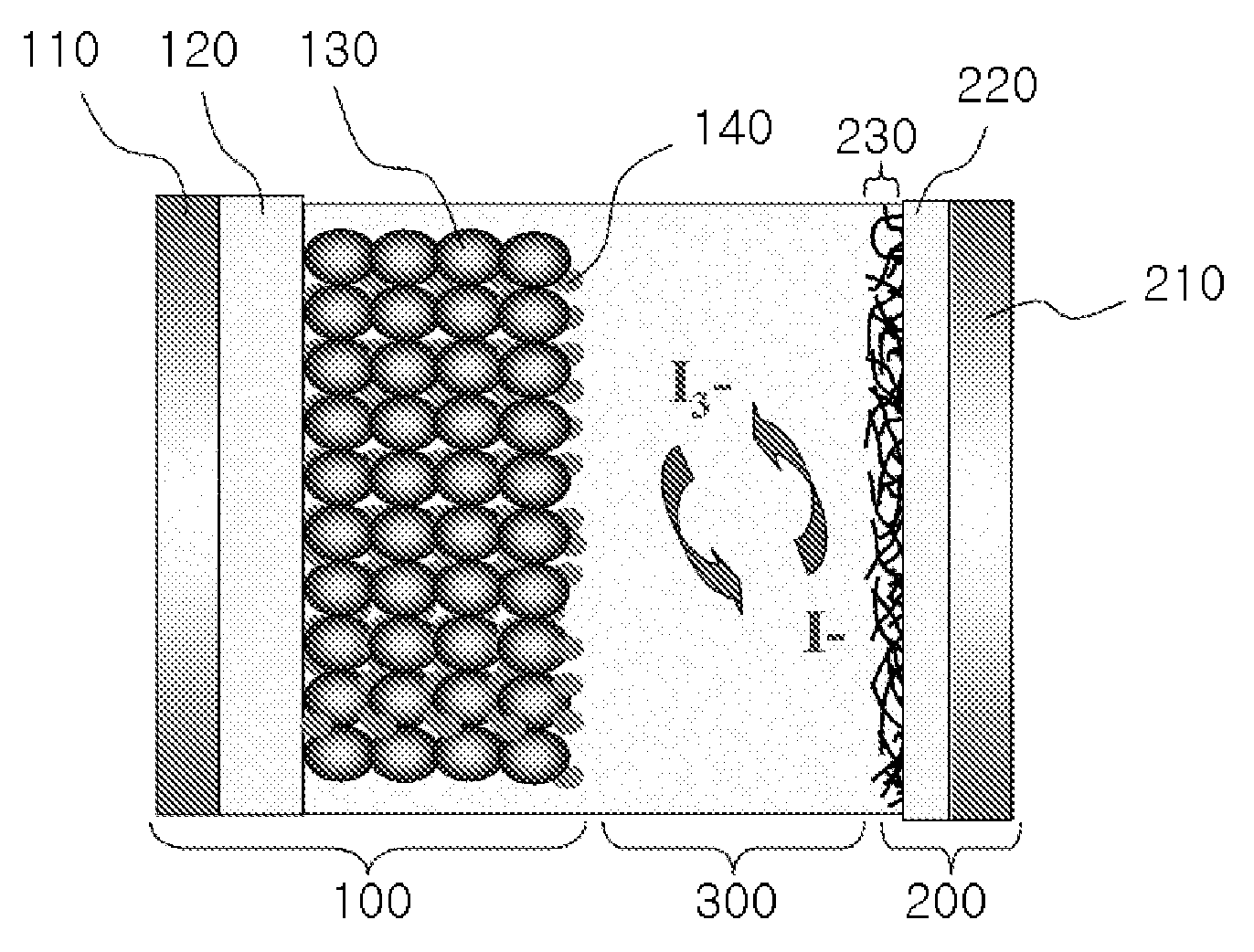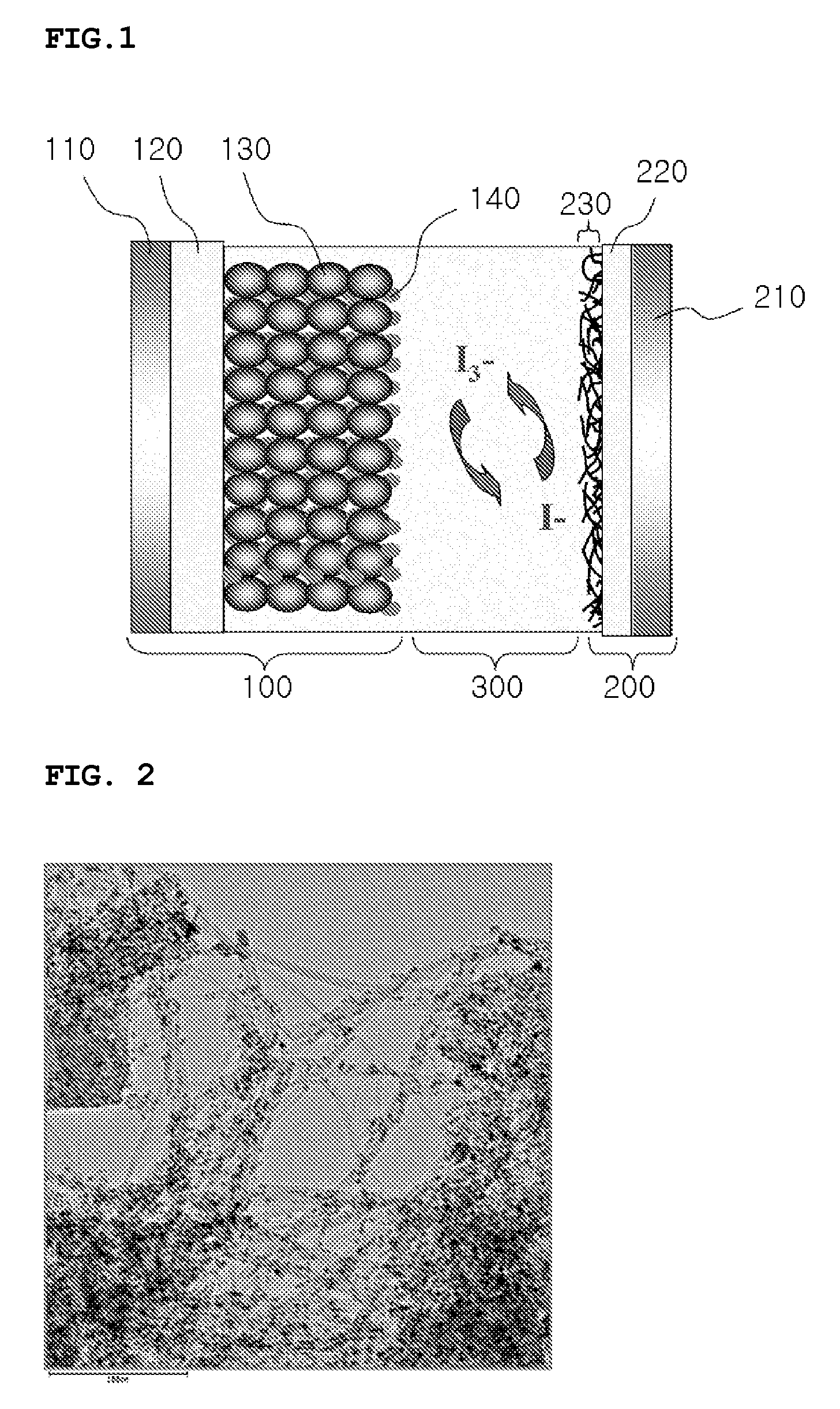Photovoltaic Cell Using Catalyst-Supporting Carbon Nanotube and Method for Producing the Same
a photovoltaic cell and carbon nanotube technology, applied in nanoinformatics, sustainable manufacturing/processing, final product manufacturing, etc., can solve the problems of limited catalytic activity, small surface area contacting the electrolyte layer, and increasing production costs, and achieve high catalytic activity
- Summary
- Abstract
- Description
- Claims
- Application Information
AI Technical Summary
Benefits of technology
Problems solved by technology
Method used
Image
Examples
preparation example 1
Preparation of a Pt-supported Carbon Nanotube
[0051]0.9432 grams (g) of H2PtCl5 were dissolved in about 20 g of ethylene glycol. Separately, about 0.25 g of single wall carbon nanotubes were dispersed in a mixture of about 100 g water and about 80 g of ethylene glycol. The carbon nanotube solution thus prepared was added to the Pt solution, and the mixture's pH was adjusted to about 11 with NaOH. After that, the mixture was allowed to stand at about 105 degrees Celsius (° C.) for about 2 hours, followed by further heating at about 110° C. for about 1 hour to reduce the platinum to metallic platinum and dispose it onto the surface of the carbon nanotubes. After the reaction was complete, the reaction mixture was centrifuged to separate the Pt-supported carbon nanotubes. The Pt-supported carbon nanotubes so separated were washed with water and subjected to lyophilization or freeze-drying. FIG. 2 shows a transmission electron microscope (TEM) image of a representation sample of the Pt-...
preparation example 2
Preparation of a Cathode
[0052]About 0.55 g of the Pt-supported carbon nanotubes prepared in Preparative Example 1, about 0.5 g of glass frit, about 14 g of a binder, and about 15 g terpineol were mixed and uniformly dispersed with a 3-roll mil for about 30 minutes to prepare a paste. Then, a glass substrate coated with FTO was coated with the paste prepared above and dried at about 70° C. for about 30 minutes. Next, the glass substrate was fired at about 430° C. for about 20 minutes under a nitrogen atmosphere, and subjected to a surface treatment to prepare a cathode.
preparation example 3
Preparation of a Cathode
[0053]A cathode was prepared according to the same method as described in Preparation Example 2 except for an additional step of activation the coated carbon nanotube through mechanical activiation.
PUM
 Login to View More
Login to View More Abstract
Description
Claims
Application Information
 Login to View More
Login to View More - R&D
- Intellectual Property
- Life Sciences
- Materials
- Tech Scout
- Unparalleled Data Quality
- Higher Quality Content
- 60% Fewer Hallucinations
Browse by: Latest US Patents, China's latest patents, Technical Efficacy Thesaurus, Application Domain, Technology Topic, Popular Technical Reports.
© 2025 PatSnap. All rights reserved.Legal|Privacy policy|Modern Slavery Act Transparency Statement|Sitemap|About US| Contact US: help@patsnap.com


